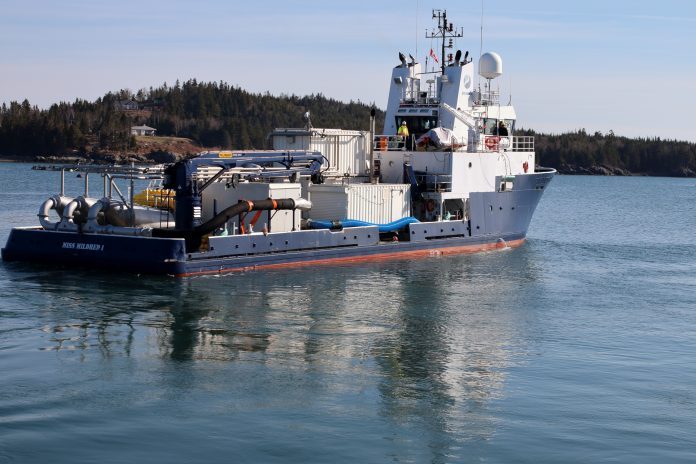Marine Harvest sees lice levels plummet at the end of 2017, but company’s Q1 2018 report showing pest’s return is entered as evidence in Scottish salmon-farming enquiry
The dramatic drop in Scottish sea-lice levels experienced by Marine Harvest at the end of 2017 — falling six-fold over 2016 — should be weighed against yearly fluctuations of sea-lice populations and not seen as a sign that the pests are under control, a conservationist group has cautioned Scottish parliamentarians.
Concerned about river health and tourism, Salmon and Trout Conservation Scotland at the weekend suggested in a note to the Scottish Rural Affairs Committee that the industry’s sea-lice battles were likely far from over in Scotland.
Read Officials in Norway green-light automated fish counts
Marine Harvest, however, had cause for cheer, as it submitted its own evidence to the Committee investigating the overall effects of salmon-farming in Scotland.
“The range of treatment methods we now use resulted in our lice levels being six times lower at the end of 2017 than at the end of 2016,” a Marine Harvest statement to the Committee said. “We have introduced a range of measures. All of these measures are helping,” the company said.
Scottish scourge
While its Canadian fish farms saw waves of jelly fish, low Ocean oxygen levels and an algae-bloom, lice levels in BC had levelled off. Scotland, however, was seeing persistently high lice levels.
“Except for Chile and Scotland, all entities reported lower sea lice levels at the end of the first quarter of 2018 compared to the end of the first quarter of 2017,” the company’s 2018 quarterly report said.
Read Cooke calls in Thermolicer for summer sea-lice battles
Seeing persistent lice in Scotland was enough for the conservationist trout society.
“This appears to suggest, as has happened in the past, that sea lice levels fluctuate from year to year, but are, in 2018, again increasing,” Guy Linley-Adams said in a letter to the Rural Affairs committee on behalf of the Salmon and Trout group.
Rules rewrites
“Marine Harvest is the largest salmon farming company in Scotland, and it is fair to assume that their experiences with sea lice and disease are mirrored across the sector,” he wrote, although sea lice seasonality is known — if not understood — the world over.
In Norway, sea-lice are the primary reason for a new “traffic-light” rule that keeps growth out of the worst lice-hit zones.
In Scotland, the current round of evidence-giving follows an earlier Environment Committee enquiry and coincides with ongoing rules-development at agencies like SEPA and Marine Scotland. However, a new set of rules that were expected this summer, might be delayed, judging by the slow, methodical pace of the Rural affairs deliberations.

